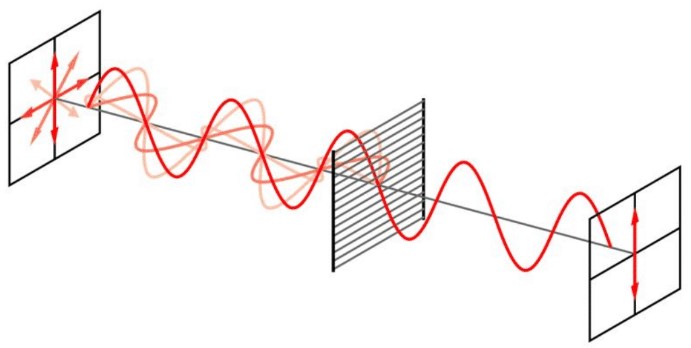In this lesson, we will learn:
- Transmission of light through different materials
- Formation of spectrum of light
- Additive color process
- Colors by subtraction
- Formation of color by light, pigments, and dyes
- Polarization of light
Notes:
- Transparent materials: Transmit light waves without distorting images (glass, air)
- Translucent materials: Transmit light waves but objects can not be see clearly (frosted light bulbs)
- Opaque: Transmit NO light but absorbs and reflects all light incident upon them (wood, brick)
- Spectrum: When a narrow beam of light passes though a prism, rainbow of different colors can be seen
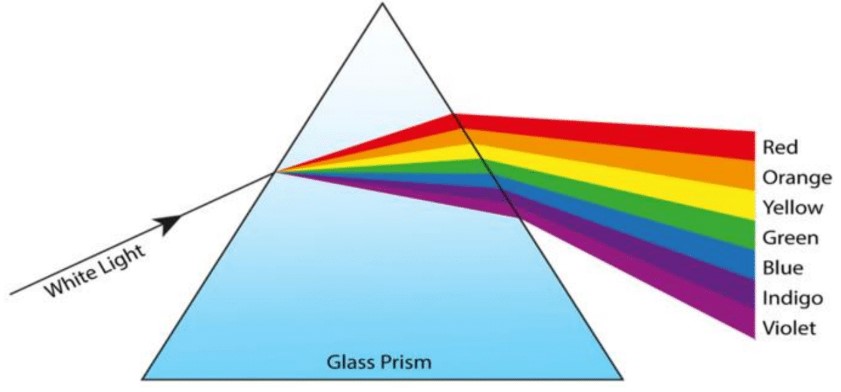
- Additive color process (RGB): The additive mixture of blue, green, and red light produces white light.
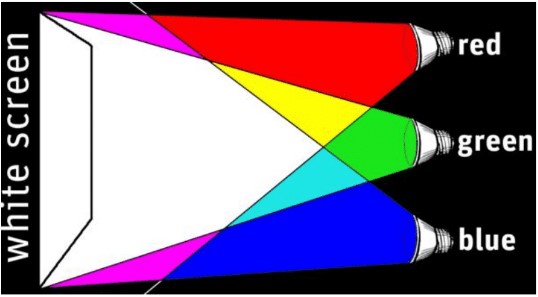
- Primary colors: red, green, blue
- Secondary colors: The primary colors are mixed by pairs to produce secondary colors;
- Yellow (red + green), Cyan (blue + green), Magenta (blue + red)
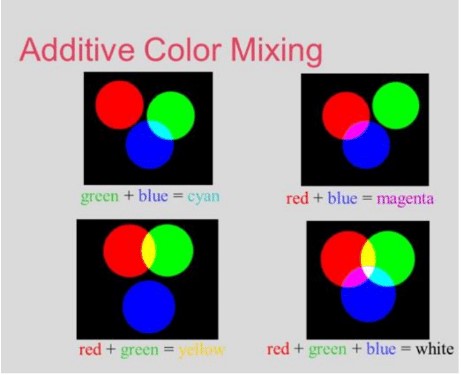
- Complementary colors: Secondary colors of light, when combined with the primary color, produces white light.
- Cyan is complementary to red
- Magenta is complementary to green
- Yellow is complementary to blue
Dye Vs. Pigment
- Dye: A molecule that absorbs certain wavelengths of light, and transmit or reflects others
- Example: Tomato is red because it reflects red and absorbs green and blue lights.
- Pigment: A colored material that absorbs a certain colors and transmits or reflects others. Pigment particles are larger than a molecule and can be seen with a microscope.
Primary Pigment Vs. Secondary Pigment
- Primary Pigment: A pigment that absorbs only ONE primary color from white light and reflects the other two. (yellow pigment absorbs blue and reflects green and red)
- Secondary Pigment: A pigment that absorbs TWO primary colors and reflects one. (red absorbs green and blue, green absorbs red and blue, blue absorbs red and green)

- Thin-film interference: Spectrum of colors produced by a soap bubble or by the oily film on water. Colors formation is the result of constructive and destructive interference of light waves.
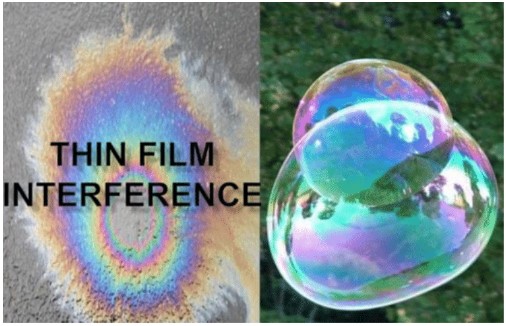
- Polarization: Using polaroid material, the direction of vibrating light waves can be modified from many directions to ONLY one specific direction.
- Polarizer: The material through which light get polarized (polarizing filter)
